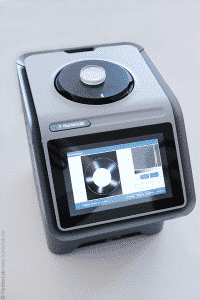UV quantification in the laboratory
Optical brighteners and whiteners
An ideal white surface has a reflection spectrum that is close to 100% in all visible wavelength ranges. That doesn’t happen in our everyday lives. Particularly in the wavelength range between 400 nm and 550 nm (blue-green), many everyday materials such as paper, textile fibers and plastics, which should actually be white, still absorb a considerable amount of light due to their natural components or production, despite strong bleaching. This leads to a more or less pronounced yellow or brown tint in these materials.

The human eye sees the range between 400 nm and 700 nm.
Ultraviolet rays, on the other hand, are invisible and lie between 100 nm and 400 nm.
To counteract this, optical brighteners or so-called whiteners are often used. These chemical substances are used to make white products such as detergents, toothpaste, textiles or paper appear whiter by enhancing the reflection in the range between 400 and 550 nm through their fluorescence. This effect is also used for signal colors to make the colors shine more brightly.
What happens during fluorescence?

For color measurement on fluorescent samples, the exciting light must therefore contain UV components. If you want to determine the fluorescence component, you need two measurements: one measurement with UV component and one without UV component of the measuring flash.
The HunterLab Agera (see above) can switch the UV component of the light source on or off and calibrate it. If reflectance values of over 100 % are measured when the UV range is switched on, the sample is clearly fluorescent. If this result is compared with a measurement without the UV component of the light source, the fluorescence component can be determined.

Practical example: Measuring method – Measuring white adhesive with the HunterLab Agera
Read in our current HunterLab NEWS magazine how three different liquid adhesive samples were analyzed for their fluorescence content in a laboratory test. The magazine also contains other exciting articles on the subject of color measurement of liquids and solids.
Fill in the two fields below and we will send you the magazine as a PDF!




